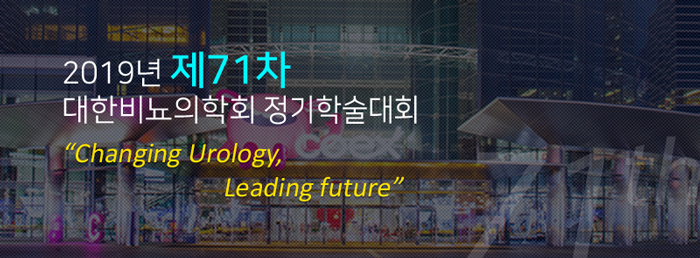|
|
Updated clinical results of laparoscopic treatment of pediatric hydrocele: 5 year follow up
|
| 계명대학교 의과대학 비뇨의학교실, ¹성균관대학교 의과대학 비뇨의학교실 |
| 하지용, 최민수, 변혜진, 신택준, 정원호, 김병훈, 박철희, 김천일 |
Introduction
The purpose of this study is to update and analysis of our experience of laparoscopic treatment of pediatric hydrocele. We classified the characteristics of pediatric hydrocele and analyzed treatment method and the results.
Patients and methods
From July 2014 to June 2019, we retrospectively analyzed 171 patients (201 units) who underwent laparoscopic surgery for hydrocele. The patients were classified as follows according to the clinical characteristics (cystic dense, reducible), internal inguinal ring (IR) types (hole with communicating, hole with tapering, closed) and treatment methods (Group 1: laparoscopic assisted high ligation only, Group 2: high ligation + scrotal aspiration, Group 3: hydrocelectomy). We compared the success rate and complications. The patients with reducible hydrocele were performed only high ligation, with cystic dense hydrocele were added aspiration. When the hydrocele had closed IR, hydrocelectomy was performed.
Results
The mean age of the patients was 31.2 (19-105) months. The mean follow-up duration was 40 (1-64) months. There were two clinical features; cystic dense in 77, reducible in 124. There were three types of IR; hole with communicating in 129, hole with tapering in 67, closed in 5. The size of the testis had hydrocele was smaller than contralateral side. There were 124 units in group 1, 50 units in group 2 and 12 units in group 3. The success rate was 97.8% (131/134) for group 1, 98% (53/54) for group 2 and 100% (13/13) for group 3.
Conclusions
Laparoscopic treatment of hydrocele is simple, safe and cosmetic procedure for pediatric hydrocele. And, laparoscopic procedure for classification of IR is necessary for accurate diagnosis and treatment, which may reduce unnecessary scrotal surgery.
|
|
keywords : hydrocele, laparoscopic treatment |
|

